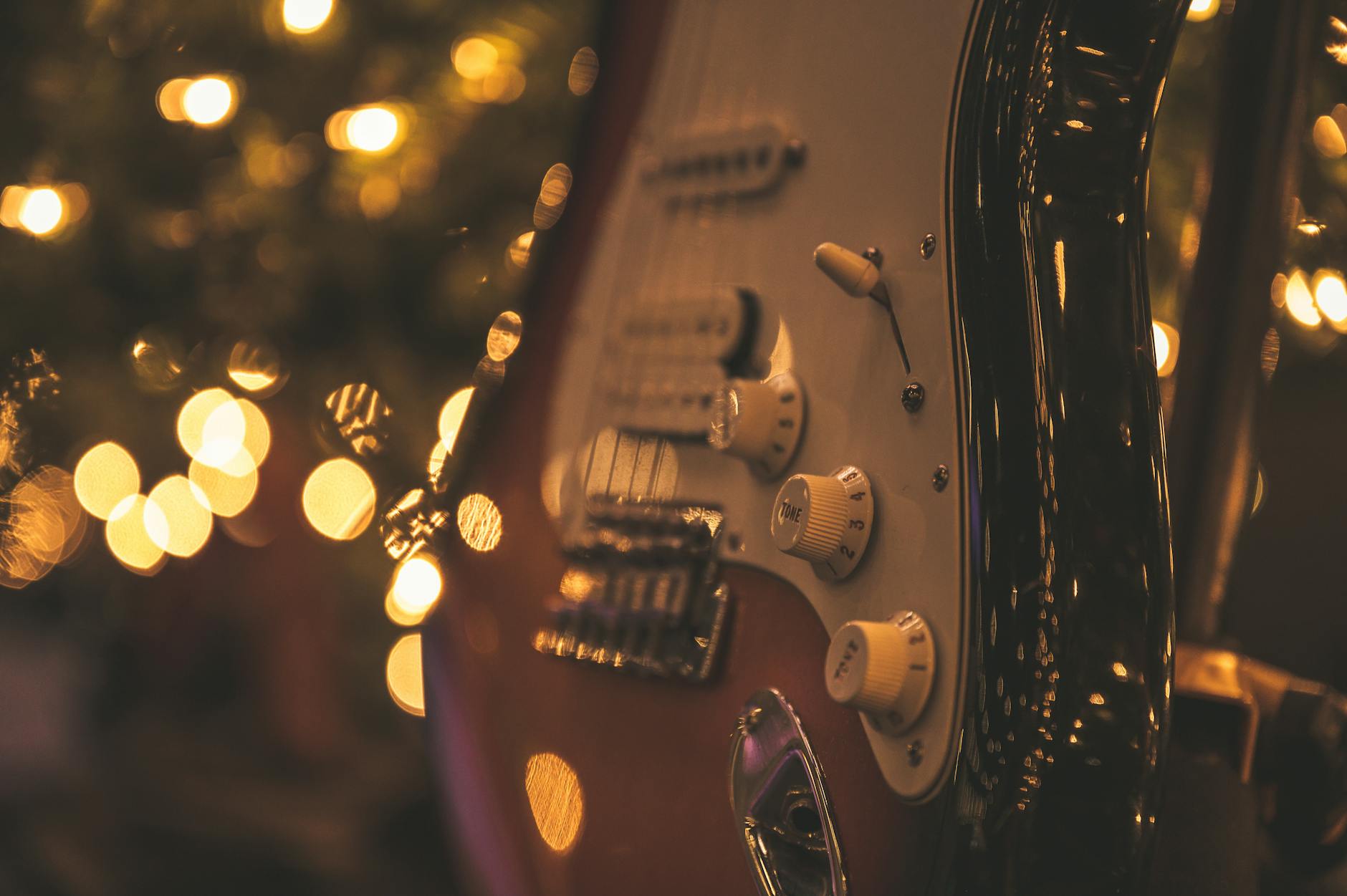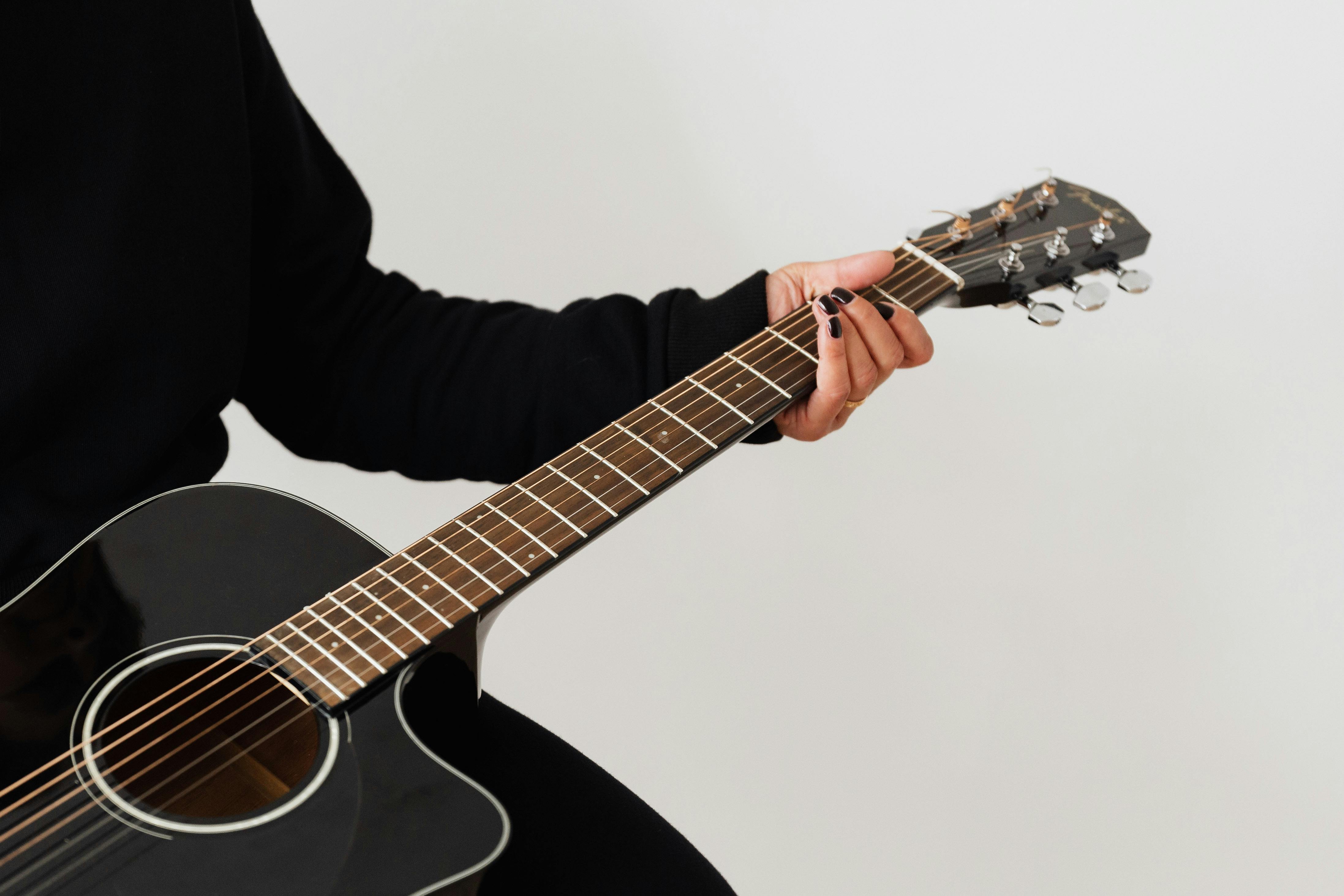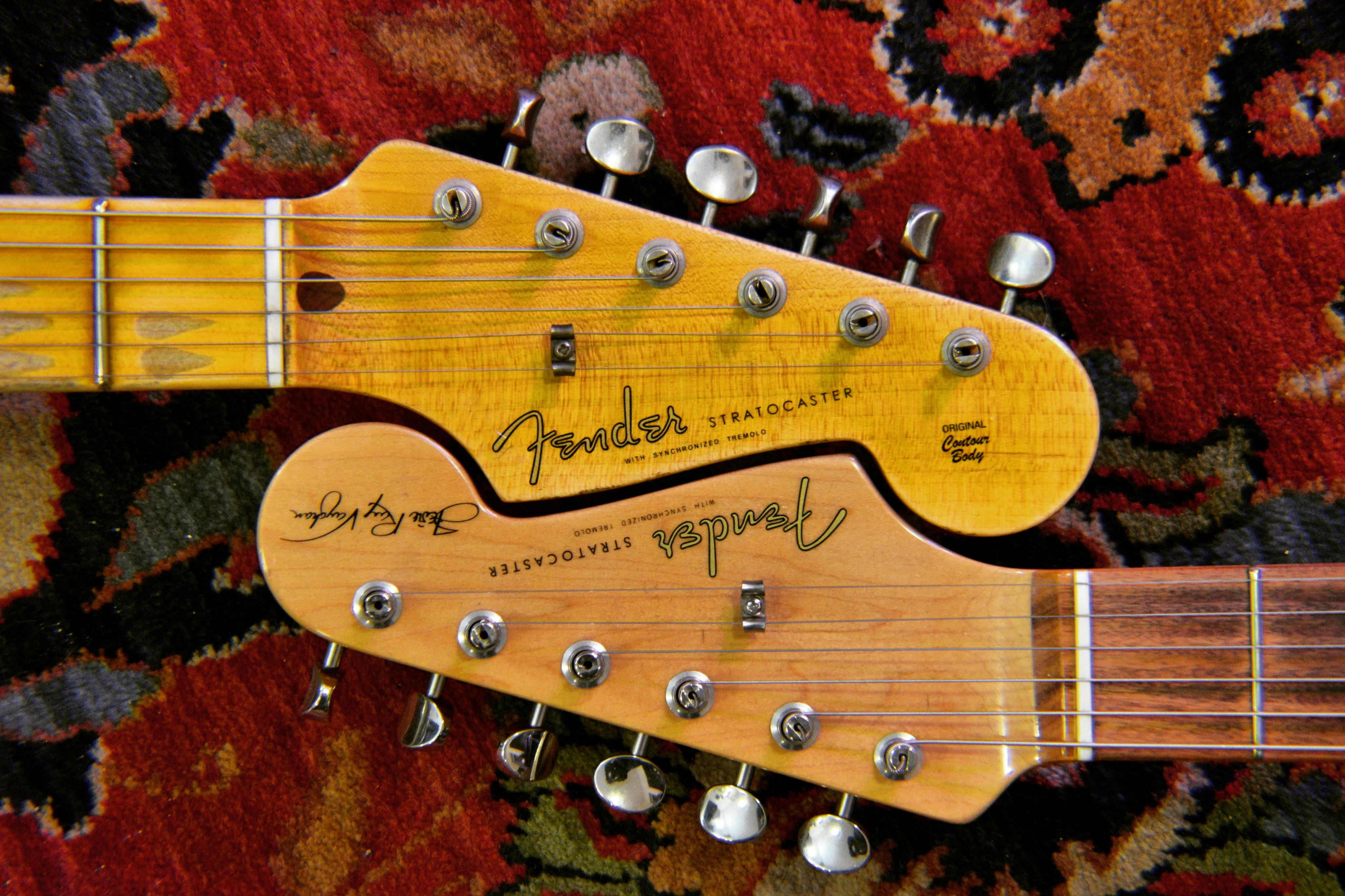3 Easy and Affordable DIY Mods to Transform Your Electric Guitar at Home
Learn beginner guitar mods with expert guitar instruction and practical techniques.

Ever wondered how a $20 mod could make a $200 guitar play and sound like it just got a pro setup? For beginner guitarists, those little upgrades aren't just for the pros. They're secret weapons. Most entry-level guitars sound decent out of the box, but a few easy, low-cost tweaks can make them play smoother, stay in tune, and even open up brand-new creative options—all with basic tools you probably own already.
Here's what separates the players who stick with it from those who give up frustrated: confidence to work on your own gear. This guide breaks down three beginner guitar mods with the highest impact for the price—no fancy shop, no technical background, no stress required. Each comes with specific parts to buy, step-by-step instructions, and expert tips from the web's most trusted sources. Ready to get started?
What You'll Learn:
- The three easiest beginner guitar mods: tremolo block upgrade, kill switch install, and nut material swap
- Most mods cost under $30 and require only basic hand tools
- Upgrading the tremolo block improves sustain and tuning stability
- A kill switch adds creative control—all while being easy to reverse
- Swapping your nut material can noticeably improve tone and tuning
- Step-by-step, beginner-friendly guides included for each mod
What You’ll Need for Beginner Guitar Mods
Thinking about making your first guitar mod? Here’s the good news: almost all beginner guitar mods can be done with just a handful of basic tools and supplies. Don’t let nerves about DIY hold you back—a little prep goes a long way, and you won't need anything fancy or expensive.
Essential Tools and Supplies
- Phillips and flathead screwdrivers (size #1 or #2 fits most guitar hardware)
- Small adjustable wrench or nut driver (for tuners and pots)
- Soldering iron and solder (for anything electrical—kill switches, wiring tweaks)
- Wire cutters and strippers (for neat wiring and clean cuts)
- Masking tape (protects your finish and marks holes)
- Sandpaper (220/400 grit for nut work and smoothing edges)
- Small hammer (helps seat new nuts or tap components)
You’ll find basic starter soldering kits for around $15 online—a great investment if you’re planning a couple of mods. For nut work, a cheap set of needle files is handy but not required; sandpaper works in a pinch.
Choosing the Right Parts for Your Guitar
Different models, different parts. The most common beginner mod platforms: Squier Strat, Affinity Tele, Epiphone Les Paul, Yamaha Pacifica. For each, search online or ask your local shop for parts labeled "direct fit" or "drop-in replacement." This removes guesswork and usually means zero modification needed.
Here’s what to check before ordering:
- For tremolo blocks: check string spacing and block shape (import Strats use smaller blocks than MIM or US models)
- For kill switches: almost any guitar can fit a mini momentary switch, but eye up your pickguard or control plate first
- For nut upgrades: measure nut width and thickness. Many beginner guitars use a 42mm nut; double-check with calipers or a ruler
Recommended online parts shops: StewMac, Philadelphia Luthier Tools, Guitar Fetish—all offer affordable, beginner-friendly hardware. If shopping on Amazon or eBay, stick to brands with lots of user photos and reviews.
Safety Tips and Workspace Setup
- Always work on a clean, flat surface covered with a towel or mat to protect your guitar
- Unplug all electronics and remove strings if needed before starting mods
- Keep all screws, springs, and hardware in bowls or bins—small parts vanish fast!
- Take photos before you remove anything—snapshots will save you if you get lost
Most beginners find that, with slow steps and steady hands, these mods are way less intimidating than they look. And if you get stuck, there’s no shame in asking local techs or the online DIY community for a sanity check. According to Guitar World's guide, just having the basics on hand dramatically increases a beginner's confidence—and success rate.
1. Tremolo Block Upgrade for Sustain and Stability
The tremolo, or "vibrato," block controls a massive piece of your Stratocaster's tone and feel—but it's hidden under the backplate, so many beginners never touch it. This chunk of metal anchors the springs and bridge. On most budget guitars (especially import Strats), the factory block is surprisingly thin and light, carved out of pot metal to save costs. That leaves sustain, resonance, and tuning stability on the table.
Why Upgrade Your Tremolo Block?
Turns out, mass matters. Swapping for a heavier steel or brass block can bring night-and-day improvement—longer sustain, more solid low end, and that "struck bell" vibe heard on higher-end Fenders. Plus, a better block means your trem stays stable even with regular whammy use. Real-world tests at Guitar World found this is one of the highest bang-for-buck mods on any beginner guitar.
Bonus: it’s usually under $25 for a quality part, and takes less than an hour to install with just a screwdriver and a little caution.
Step-by-Step: Installing a New Tremolo Block
- Loosen/remove all strings for access
- Flip the guitar and unscrew the tremolo cavity cover
- Remove the tremolo springs (use a towel to avoid scratches)
- Unscrew the tremolo bridge from the top and carefully lift out the assembly
- Unscrew and separate the factory block from your bridge
- Attach the new block, lining up all holes—don’t force the fit!
- Reinstall the bridge, springs, and cover
- Restring, tune, and check bridge level by eye
Quick tip: If you feel resistance when screwing in the new block, stop—double-check for burrs or mismatched holes, and gently file if needed. Avoid over-tightening, which can strip soft metal threads.
Cost Breakdown and Sourcing Parts
Expect to spend $15–25 for a solid steel or brass block—well within most beginner budgets. Top sellers: Guitar Fetish “Solid Steel” Strat block, Wilkinson brass blocks (look for import spacing: 52.5mm or 54mm). A basic screwdriver set and ten minutes of courage are all it takes.
2. Installing a Kill Switch for Creative Control
Ever wanted to create those fast stutter or machine-gun effects like Tom Morello or Buckethead? The kill switch is the ticket—and it’s far simpler than it sounds. At its core, a kill switch momentarily shuts off your guitar’s output, letting you chop, mute, or cut out sound mid-phrase. It’s more than just a trick; it gives beginners a fresh, interactive way to play with dynamics and riffs.
What Is a Kill Switch and Why Add One?
Kill switches are dead simple—one push and the signal cuts. They’re cheap, reversible, and work on nearly any electric guitar. According to Guitar World, even total beginners can add this mod in under 30 minutes with basic tools. Best part? No need to cut up vintage gear or risk permanent damage. If you ever want to remove it, just pop the switch out and patch the hole in your pickguard.
Guitar World and Instructables both recommend using a "momentary" (normally-open pushbutton) switch—it only cuts the signal when pressed, which means you keep all your regular tones until it’s time to stutter, chop, or silence your sound completely.
How to Install a Kill Switch: Step-by-Step
- Choose your spot—most players put it near the volume knob or on a Telecaster control plate. Use masking tape to mark your spot and protect the finish.
- Drill a hole sized for the switch (usually 12-14mm for mini switches). Go slow, support the pickguard, and check depth twice.
- Desolder the guitar's output wire from the output jack, and solder one kill switch terminal to this output wire.
- Solder the other terminal to ground (usually the back of a pot casing or shielding foil).
- Tin the switch pads (add a dab of solder to make future work easier)—as recommended by Guitar World.
- Secure the switch in place, reconnect all wiring, and tighten the nut by hand only—no need to overtighten.
- Plug in and test—if it kills your signal only when pressed, you’re ready to go. If not, flip the terminals and test again.
Extra tip: Most wiring mistakes sound intimidating, but are easy to reverse—just unsolder and swap connections. If you run into buzzing or pops, double-check that the switch is grounding only when pressed, not always.
Mini kill switch buttons are $3–6 online. Try to use one labeled “momentary, normally open” for foolproof results. Want to see this in action? Instructables has a photo-rich step-by-step for most popular guitar layouts.
Once installed, experiment with fast muting for percussive funk, rhythm breaks, or old‑school arcade-style effects. It’s addictive.
3. Upgrading the Nut Material for Better Tone
If tuning issues or dull tone are driving you crazy, it's often the nut to blame. The nut is that thin strip at the headstock, guiding strings onto the fretboard. It sets string spacing, height, and (surprise) dramatically affects both tone and tuning stability—especially on cheaper guitars, where soft plastic nuts are common. A simple swap to bone, Tusq, or graphite can make a budget guitar play and sound like something twice the price.
Why Nut Material Makes a Difference
Here’s the science: harder nut materials improve sustain, add clarity, and keep your guitar in tune better, especially after bending or using the tremolo. Premier Guitar and Delco Music Co. both report that a nut swap is one of the most overlooked ways to achieve pro-level performance, particularly for beginners who notice frequent tuning issues.
Popular upgrade choices:
- BONE: Classic for clarity and sustain; needs a little sanding/fitting
- TUSQ: Synthetic bone—more consistent, no animal products, drop-in fit for many budget guitars
- GRAPHITE: Great for tremolo users (reduces friction and helps tuning stability); slightly darker tone
Try to choose a pre-slotted, direct-fit replacement designed for your guitar model. This skips the most intimidating part—cutting new slots.
Step-by-Step: Swapping Your Guitar Nut
- Loosen all strings and tape off wood around the nut to protect your headstock
- Using a light tap (wooden dowel and small hammer), gently pry the old nut loose—never force it side-to-side or you’ll risk chipped finish
- Clean any glue or debris from the slot with fine sandpaper
- Dry-fit the new nut: it should sit flush and snug, but not tight
- If needed, gently sand the bottom or sides for fit (220–400 grit)
- Add a tiny drop of white glue (optional—not super glue); seat the nut and press gently
- Restring, bringing strings up to tension, and check action at the first fret
- If string slots are high, sand the bottom further in very small increments. Too low? Start over or shim with a thin slice from your old nut
Final test: Press the first fret and measure the gap above the second fret—ideal action is just a hair. Too high, and you’ll fight to play; too low, and notes might buzz.
Expect to pay $10–20 for a good-quality bone or Tusq nut. Both Premier Guitar and Delco Music Co. swear by this mod for players on a tight budget.
Troubleshooting and Setup Tips After Modding
After any mod, a basic setup can be the difference between instant success and days of frustration. The trick is covering the fundamentals—action, intonation, and pickup height—before you dive into the new tones you’ve unlocked.
Post-Mod Setup Essentials
- Action: Fret buzz or a stiff feel after a nut or trem upgrade? Target 5/64" (2 mm) on the low E, 3/64" (1.2 mm) on the high E, measured at the 12th fret.
- Intonation: Tune up with a good tuner. Play the 12th fret harmonic and then the fretted 12th. If they're sharp/flat, move the saddle back or forward a touch until both notes are spot-on.
- Pickup Height: After nut changes especially, measure. For most single-coils, 3/32" (2.4mm) on the low E and 2/32" (1.6mm) on the high E keeps output strong and balanced.
And don’t panic if things feel off—here’s a quick fix list:
- Buzzing after nut install? Check slot height and depth—too low, add a shim; too high, more sanding
- Tremolo binding or won’t return to pitch? Springs may not be seated, or block might not sit flat—double-check all connections
- Kill switch hums? Reinspect grounds and make sure no hot wire is touching the shielding or pot casing
Most players find a quick setup solves 90% of post-mod gremlins. And if in doubt, Premier Guitar’s setup guide walks through all the basics in plain English.
Bottom line: Every beginner guitar mod shines its brightest with a little post-mod TLC.
Conclusion
Beginner guitar mods don’t just upgrade your instrument—they unlock fresh sounds, smoother playability, and the confidence to shape your own gear. Swapping a tremolo block, installing a kill switch, or fitting a better nut all give big returns for a tiny investment and just a bit of sweat equity. These mods let any player, no matter their experience, start building their dream setup one step at a time.
Remember: small changes add up. Each mod teaches new skills and opens up room for even more creative upgrades down the line. Keep safety and patience at the center of your approach, and you’ll join the growing ranks of players who’ve made their beginner guitars play—and sound—like a million bucks.
Frequently Asked Questions
What are the easiest guitar mods for beginners?
The easiest beginner guitar mods are swapping the tremolo block for better sustain, installing a kill switch for added creative effects, and upgrading the nut material for improved tone and tuning. Each can be done with basic tools at home for under $30, as shown in top guides from leading guitar publications.
How much does it cost to upgrade guitar pickups?
Beginner-friendly pickup upgrades typically cost $30–$80 per pickup, though most basic mods—for example, tremolo block, nut, or kill switch—cost $5–$25. Beginners sometimes wait on full pickup swaps, focusing first on more affordable mods to maximize initial improvements.
How do you install locking tuners?
To install locking tuners, remove the strings, unscrew the old tuners, align and fit the new tuners (matching the shaft holes), and screw them in place. Most replacements are direct-fit, taking under 30 minutes. No special tools beyond a screwdriver are required for most beginner guitars.
Will these mods void my guitar warranty?
Most reversible mods—like kill switches and nut swaps—won’t void warranties, but major changes or permanent drilling (outside pickup and control plate areas) could. Always check the manufacturer’s policy and, when in doubt, choose mods that are easy to reverse without permanent changes.
Key Takeaways
- Beginner guitar mods like tremolo block, kill switch, and nut swaps are affordable and easy to do at home.
- Upgrades can significantly boost sustain, tuning, and creative options for less than $30.
- Direct-fit parts, basic hand tools, and careful measurements make these mods safe for first-timers.
- Every mod works best when paired with a proper setup for action, tuning, and pickup height.
Related Topics
Explore more articles in these topics to deepen your knowledge.
Related Articles

DIY Stratocaster Pickup Swap with Elevator Plate Mod for Extra Twang
Learn Stratocaster pickup swap with elevator plate with expert guitar instruction and practical techniques.

Complete DIY Guide to Electric Guitar Fret Leveling, Crowning & Polishing (2025)
Discover how to master DIY guitar fret leveling crowning polishing with expert tools and clear steps. Upgrade your guitar today!

2025 Step‑By‑Step Guide to Installing a Humbucker in a Stratocaster
Master how to install humbucker in stratocaster safely. Avoid wiring mistakes—get expert tips, diagrams, and troubleshooting help. Start your upgrade now!
Discover more insights from our blog to enhance your musical journey.
